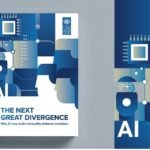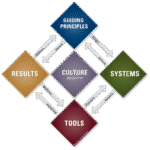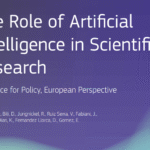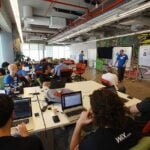
In today’s educational landscape, creativity is no longer a luxury confined to art classes but a fundamental competency. In a world characterized by rapid change, complexity, and automation, students’ ability to think originally, solve novel problems, and adapt flexibly is more crucial than ever. In this sense, creativity is a complex and multifaceted skill that is critical for the future of work and education (Camarda et al., 2023).
Schools have the responsibility not only to impart knowledge but also to cultivate the ingenuity that will drive future innovation and enable students to thrive both personally and professionally. As a result, approaches to assessing creativity in educational contexts have expanded in line with the growing national and international emphasis on the importance of identifying, nurturing, and evaluating young people’s creative potential (Beghetto & van Geffen, 2024).
But how can educators know if they are effectively fostering creativity? How can they identify students with exceptional creative potential or those who need more support? This is where creativity assessment in education comes into play. This article explores this vital field, addressing the persistent question: Can creativity be measured? in the school context. It defines creativity assessment for educators and examines the different tests and tools available for assessing creativity in educational settings, from identification to development.
What is Creativity Assessment?
In the educational context, creativity assessment is defined as the systematic process of collecting, interpreting, and using information about students’ creative skills, processes, products, and dispositions to support their learning and holistic development. Panfilova et al. (2024) define creativity assessment as the process of evaluating an individual’s creative thinking abilities and their capacity to generate new and valuable ideas.
On the other hand, Haiying et al. (2022) reported that creativity assessments in education are divided between psychological and educational research. Meanwhile, Camarda et al. (2023) describe that individual-level creativity assessment encompasses two main approaches: production-based creative achievement and creative potential. In this regard, the purposes of creativity assessment in schools are diverse and crucial:
- Early Identification: Recognizing students with high creative abilities to provide enrichment programs or curricular adaptations (e.g., gifted and talented programs).
- Formative Diagnosis: Understanding students’ specific creative strengths and weaknesses to inform instructional planning and pedagogical differentiation. Does a student need more support in idea fluency or elaboration?
- Program and Curriculum Evaluation: Measuring the effectiveness of educational interventions, new pedagogical approaches (such as project-based learning), or programs specifically designed to foster creativity.
- Fostering Student Self-Awareness: Helping students recognize and value their creative abilities, motivating them to develop them further.
- Communication with Families: Providing parents with information about their children’s creative development.
- Educational Research: Studying how creativity develops across different ages and contexts and which teaching practices are most effective.
Regarding this, Qian & Plucker (2021) highlight that creativity can be assessed from four different perspectives:
- Person: Evaluating traits such as curiosity, openness to new ideas, perseverance in the face of challenges, and the willingness to take intellectual risks.
- Process: Observing and evaluating how students approach open-ended problems, generate ideas (brainstorming, mind maps), experiment, refine their work, and reflect on their own thinking.
- Product: Assessing the originality, task appropriateness, and elaboration of students’ work (projects, essays, problem solutions, presentations, artistic creations).
- Press (Environment): Evaluating the classroom and school climate. Do students feel safe expressing unusual ideas? Do they have opportunities for exploration and experimentation? Do teachers model and value creativity?
Understanding creativity assessment in education means seeing it as an integral part of the teaching and learning cycle, not as an isolated event.
Can Creativity Be Measured?
The question “Can creativity be measured?” takes on particular urgency in education. While debates persist about fully capturing creativity, the need to identify and foster this skill in all students drives the search for viable assessment methods. The answer, adapted to the school context, remains “yes, but with important considerations.”
Findings from Long & Wang’s (2022) research suggest that the subjective creativity assessment approach shows a good level of reliability and validity but also presents certain degrees of unreliability and invalidity that must be addressed through sound research practices and more advanced measurement theories and methods.
In this sense, yes, we can measure specific aspects of creativity relevant to learning:
- Divergent Thinking Skills: The ability to generate multiple ideas (fluency), varied ideas (flexibility), and unusual ideas (originality) can be assessed through specific tasks.
- Creative Problem-Solving Skills: The ability to tackle complex, ill-defined problems and develop novel and effective solutions.
- Creative Products: The quality of students’ work can be assessed using clear criteria (e.g., through rubrics).
- Creative Dispositions: Certain attitudes and traits (curiosity, perseverance) can be observed or measured through self-reports or teacher reports.
However, considerations are crucial in the educational setting:
- Contextual Validity: A creativity assessment test may measure divergent thinking well, but does it actually predict creative performance in an authentic science or writing task? The assessment must be relevant to learning objectives.
- Equity: Are assessment tools fair for students from diverse cultural, linguistic, and socioeconomic backgrounds? Do they measure creative potential or prior cultural knowledge?
- Impact on Teaching: How will the results be used? Will they serve to label students or to inform and improve instruction for all? There is a risk of reducing creativity to a score and “teaching to the test.”
- Feasibility: Are the tools practical for use by busy teachers in real classrooms? Do they require extensive training?
Therefore, while it is possible to measure facets of creativity in education, it is imperative to do so ethically, equitably, and with a clear purpose aimed at student development.
Creativity Assessment Test vs. Creativity Assessment Tool
For educators, understanding the difference between a creativity assessment test and a creativity assessment tool is essential for selecting the appropriate methods.
What is a Creativity Assessment Test?
When an educator asks, “What is a creativity test?”, they are usually referring to standardized instruments often used for specific purposes, such as:
- Identification for Special Programs: Tests like the TTCT (Torrance Tests of Creative Thinking) or CAP (Creativity Assessment Packet) are frequently used as part of the selection process for gifted and talented programs. They provide normative scores that compare a student to their peers.
- Research: Used in studies to understand creativity development or evaluate the effectiveness of large-scale interventions.
Characteristics: Standardized administration and scoring, focus on cognitive skills (primarily divergent thinking), and quantitative results.
What is a Creativity Assessment Tool?
A creativity assessment tool is a broader term that encompasses any method used by educators to understand and evaluate students’ creativity on a daily basis or for specific purposes. It includes:
- Standardized Tests: Like those mentioned above.
- Rubrics: Scoring tools developed (or adapted) by teachers to evaluate creativity in projects, presentations, writing, etc., based on specific criteria (originality, elaboration, problem-solving).
- Checklists and Observation Scales: Used by teachers to record the frequency of observed creative behaviors in the classroom (asking unusual questions, experimenting with materials, proposing alternative solutions).
- Portfolios: Collections of student work over time, showing the growth and application of creative skills in different contexts. Common in arts but applicable to many subjects.
- Self-Assessments and Reflections: Encouraging students to reflect on their own creative process, challenges, and achievements.
- Classroom Climate Evaluations: Tools for teachers to assess whether their learning environment supports risk-taking, curiosity, and diverse idea expression.
The choice between a formal creativity assessment test and other creativity assessment tools depends on the objective. For formal identification, a standardized test may be necessary. For daily formative assessment and curriculum integration, rubrics, observations, and portfolios are often more practical and meaningful for guiding instruction. The question is not “Which is better?” but “Which is appropriate for this educational purpose?”
Main Types of Creativity Assessment Tools and Tests in Education
Creativity in education is primarily assessed through divergent thinking tests, creativity tests, self-report questionnaires, and subjective product-based evaluations (Haiying et al., 2022). Below are key categories of tools with a focus on their application in schools and classrooms:
Psychometric Tests: Identification and Cognitive Measurement
Divergent Thinking (DT) Tests
- Torrance Tests of Creative Thinking (TTCT):
The most widely used creativity assessment test in education, especially for identifying gifted students. Developed by E. Paul Torrance in the 1960s (Alabbasi et al., 2022), its verbal and figural components evaluate fluency, flexibility, originality, and elaboration. Its use requires trained personnel for scoring and should be considered alongside other sources of information. - Creativity Assessment Packet (CAP):
Specifically designed for children and adolescents, it is another option used in school settings to identify creative potential. - Divergent Association Task (DAT):
Although newer and less established in schools, its brevity makes it a useful tool for quick screening or large-scale educational research, measuring a specific aspect of semantic divergence. - Scientific Creativity Test for Upper Secondary School Students (SCT-USSS):
A component of the Comprehensive Scientific Creativity Assessment (C-SCA), validated by Xu et al. (2025), this test is a reliable measure of secondary students’ thinking styles (divergent and convergent thinking). - Other Tests:
Assessments like the Alternative Uses Test can be easily adapted for classroom activities that stimulate and informally evaluate divergent thinking.
Performance-Based and Product-Based Assessments
These are often the most authentic ways to assess creativity in the classroom, as they integrate directly into students’ work.
- Creativity Assessment Rubrics:
A fundamental teacher tool. Clear rubrics can be designed to evaluate creativity in specific tasks (science projects, history essays, multimedia presentations, mathematical solutions). Criteria may include originality of ideas, depth of research, quality of execution, and effective communication. These rubrics follow principles similar to the Consensual Assessment Technique (CAT), where the teacher acts as the expert evaluator. - Portfolio Assessment:
Allows a longitudinal view of students’ creative development. Digital portfolios facilitate the collection and evaluation of various works (writing, videos, coding, art). - Authentic Performance Tasks:
Designing tasks that require students to apply knowledge and skills to solve real-world problems or create meaningful products. The assessment focuses on both process and final product.
Self-Reports and Teacher Observations
- Checklists and Observation Scales:
Allow teachers to systematically record creative behaviors (curiosity, imagination, collaboration, perseverance). These are valuable formative tools. The Renzulli Learning approach often incorporates teacher ratings of student traits. - Student Self-Assessments and Reflections:
Encouraging metacognition by asking students to evaluate their own work and creative process. This fosters self-awareness and ownership of learning. Sumarni et al. (2025) developed a valid and reliable creativity self-assessment instrument that helps students recognize and improve their creative abilities independently. - Interest Inventories and Learning Style Surveys:
Tools such as those used in Renzulli Learning help identify students’ passions and preferences, which is crucial for personalized learning and fostering intrinsic motivation, a key driver of creativity.
Educators have multiple assessment options for creativity, each serving a different purpose. Standardized creativity tests provide norm-referenced scores and are useful for research and special program identification. Meanwhile, creativity assessment tools, such as rubrics, portfolios, and self-assessments, offer more flexible and contextually rich ways to evaluate and nurture creativity in everyday learning.
Selecting the right method depends on the educational goal, ensuring that creativity assessment enhances learning rather than merely measuring it.
Specific Examples of Creativity Assessment in Educational Practice
Identification for Gifted Programs
Many U.S. school districts use the TTCT (Torrance Tests of Creative Thinking) or CAP (Creativity Assessment Packet) as part of a test battery (along with IQ and academic performance measures) to identify students who may benefit from advanced educational services. Originality and Fluency scores are often of particular interest.
Formative Classroom Assessment
An elementary school teacher uses a simple rubric to assess the “originality of the idea” and “detail elaboration” in students’ written stories. This information helps plan mini-lessons on how to develop more engaging characters or plots.
Project-Based Learning (PBL)
In a high school project where students design solutions for a community problem, the teacher combines:
- Observation of teamwork processes,
- A rubric to evaluate the novelty and feasibility of the final solution, and
- A written reflection where students analyze their own creative process.
Renzulli Learning System
This approach uses a “Renzulli Profile”, which includes data on interests, learning and expression styles, and traits like creativity (often assessed by teachers and/or self-reports). This information connects students with personalized enrichment activities (“Type III Enrichment”), fostering the development of their creative potential in areas of interest.
Field (2009) suggests that using Renzulli Learning 2-3 hours per week for 16 weeks can significantly improve reading comprehension, oral reading fluency, and social studies performance in students from grades 3 to 8.
Challenges of Creativity Assessment in Education
Implementing meaningful creativity assessment in schools presents unique challenges:
Time and Curriculum Pressure
Teachers often feel they lack time for creativity assessment amid the demands of covering the standard curriculum and preparing for standardized tests.
Lack of Teacher Training
Many teacher training and professional development programs do not adequately prepare educators to understand, foster, and effectively assess creativity.
Standardization Culture
The strong emphasis on multiple-choice standardized testing in many education systems can marginalize the assessment of complex skills like creativity.
Dumas and Grajzel (2024) recommend applying the “Standards for Educational and Psychological Measurement” to enhance the quality of creativity assessments. They argue that while research on creativity assessment is advancing, it is crucial to determine how to judge the quality of these assessments and identify which work “best.”
Subjectivity and Reliability
Ensuring that teacher-judged assessments (rubrics, observations) are consistent and fair requires:
- Well-designed rubrics,
- Teacher calibration, and
- Awareness of personal biases.
Equity and Access
There is a risk that assessment tools (especially standardized tests) contain cultural or linguistic biases. Additionally, assessment must be accompanied by equitable opportunities for all students to develop their creative potential—not just those identified as “talented.”
Avoiding “Teaching to the Test”
The greatest risk is turning creativity assessment into another test-prep exercise, focusing on tricks to boost scores rather than fostering a genuine creative mindset and skills.
As the NCIEA blog suggests, assessments should be meaningful and aligned with real learning.
The Future of Creativity Assessment
Creativity assessment in education is evolving to become more integrated, authentic, and development-focused:
Curriculum-Embedded Assessments
Moving towards assessments that are a natural part of learning units and performance tasks, rather than separate tests.
Digital Portfolios and Micro-Credentials
Using technology for students to collect and showcase evidence of their creative skills over time, potentially earning formal recognition.
AI-Based Formative Tools
Exploring how Artificial Intelligence (AI) could:
- Provide personalized feedback on aspects of creative work (e.g., vocabulary variety, idea structure).
- Help teachers identify patterns in students’ thinking.
- Acar (2023) highlights that AI could revolutionize creativity assessment by offering:
- Cost reduction,
- Automation capabilities, and
- Higher reliability compared to human evaluators.
- Xu et al. (2025) examines how ChatGPT can enhance objectivity in creativity test scoring.
Emphasis on Self-Assessment and Peer Assessment
Empowering students to evaluate their own creative work and that of peers using clear criteria, fostering metacognition and accountability.
Teacher Professional Development
Increased investment in training teachers on how to:
- Recognize,
- Nurture, and
- Assess creativity effectively and equitably in their classrooms.
School Climate Assessments for Creativity
Using tools to systematically assess and improve the learning environment, ensuring that schools are places where creativity can thrive.
Conclusion
Creativity assessment in education is not an easy task, but it is essential. The question is not “Can creativity be measured?” but rather “How can we assess it meaningfully and usefully to support all students’ learning and development?”
We have seen that various tests and tools exist for assessing creativity, each with strengths and weaknesses in the educational context. From standardized tests like the TTCT for formal identification to rubrics, portfolios, and classroom observations, educators have a wide range of options.
The key is to thoughtfully, ethically, and pedagogically align these tools with educational goals.
The Ultimate Goal of Creativity Assessment
Creativity assessment should not simply be about measuring and ranking students. Instead, it should:
✅ Help adapt instruction,
✅ Provide constructive feedback,
✅ Help students understand their strengths, and
✅ Create learning environments where curiosity, experimentation, and originality are valued and actively cultivated.
By doing so, we can better equip students with the creative skills they need to navigate and shape an uncertain future.
References
Acar, S. (2023). Creativity Assessment, Research, and Practice in the Age of Artificial Intelligence. Creativity Research Journal, 1–7. https://doi.org/10.1080/10400419.2023.2271749
Alabbasi, A. M., Paek, S. H., Kim, D., & Cramond, B. (2022). What do educators need to know about the Torrance Tests of Creative Thinking: A comprehensive review. Frontiers in Psychology, 13, 1000385. https://doi.org/10.3389/fpsyg.2022.1000385
Beghetto, R. A., & van Geffen, B. (2024). Creativity assessment in schools and classrooms. In Handbook of Creativity Assessment (pp. 234-252). Edward Elgar Publishing.
Camarda, A., Mercier, M., Burkhardt, J., Morisseau, T., Vinchon, F., El Hayek, S., Mourey, F., Feybesse, C., Sundquist, D., & Lubart, T. (2023). Creativity, Critical Thinking, Communication, and Collaboration: Assessment, Certification, and Promotion of 21st Century Skills for the Future of Work and Education. Journal of Intelligence, 11(3), 54. https://doi.org/10.3390/jintelligence11030054
Dumas, D. G., & Grajzel, K. (2024). Measuring up: Aligning creativity assessment with the Standards. In Handbook of creativity assessment (pp. 2-19). Edward Elgar Publishing.
Field, G. (2009). The effects of the use of Renzulli Learning on student achievement in reading comprehension, reading fluency, social studies, and science. International Journal of Emerging Technologies in Learning (iJET), 4(1), 29-39.
Haiying Long, Barbara A. Kerr, Trina E. Emler, Max Birdnow. A Critical Review of Assessments of Creativity in Education. Review of Research in Education, 2022; 46 (1): 288 DOI: 10.3102/0091732X221084326
Long, H., Wang, J. Dissecting Reliability and Validity Evidence of Subjective Creativity Assessment: A Literature Review. Educ Psychol Rev 34, 1399–1443 (2022). https://doi.org/10.1007/s10648-022-09679-0
Panfilova, A. S., Valueva, E. A., & Ilyin, I. Y. (2024). The application of explainable artificial intelligence methods to models for automatic creativity assessment. Frontiers in Artificial Intelligence, 7, 1310518. https://doi.org/10.3389/frai.2024.1310518
Qian, M., & Plucker, J. A. (2021). Creativity assessment. In Creativity and innovation (pp. 223-234). Routledge.
Sumarni, S. S., Atik Dewi Sasanti, V. ., & Nugroho Saputro, I. . (2025). Developing Creativity Assessment Instruments for Building Engineering Vocational High School Students Based on Self-Assessment in Creative and Entrepreneurial Product Subjects. Qubahan Academic Journal, 5(1), 461–475. https://doi.org/10.48161/qaj.v5n1a1389
Xu, S., Reiss, M.J. & Lodge, W. Comprehensive Scientific Creativity Assessment (C-SCA): A New Approach for Measuring Scientific Creativity in Secondary School Students. Int J of Sci and Math Educ 23, 293–319 (2025). https://doi.org/10.1007/s10763-024-10469-z
Editor and founder of “Innovar o Morir” (‘Innovate or Die’). Milthon holds a Master’s degree in Science and Innovation Management from the Polytechnic University of Valencia, with postgraduate diplomas in Business Innovation (UPV) and Market-Oriented Innovation Management (UPCH-Universitat Leipzig). He has practical experience in innovation management, having led the Fisheries Innovation Unit of the National Program for Innovation in Fisheries and Aquaculture (PNIPA) and worked as a consultant on open innovation diagnostics and technology watch. He firmly believes in the power of innovation and creativity as drivers of change and development.





